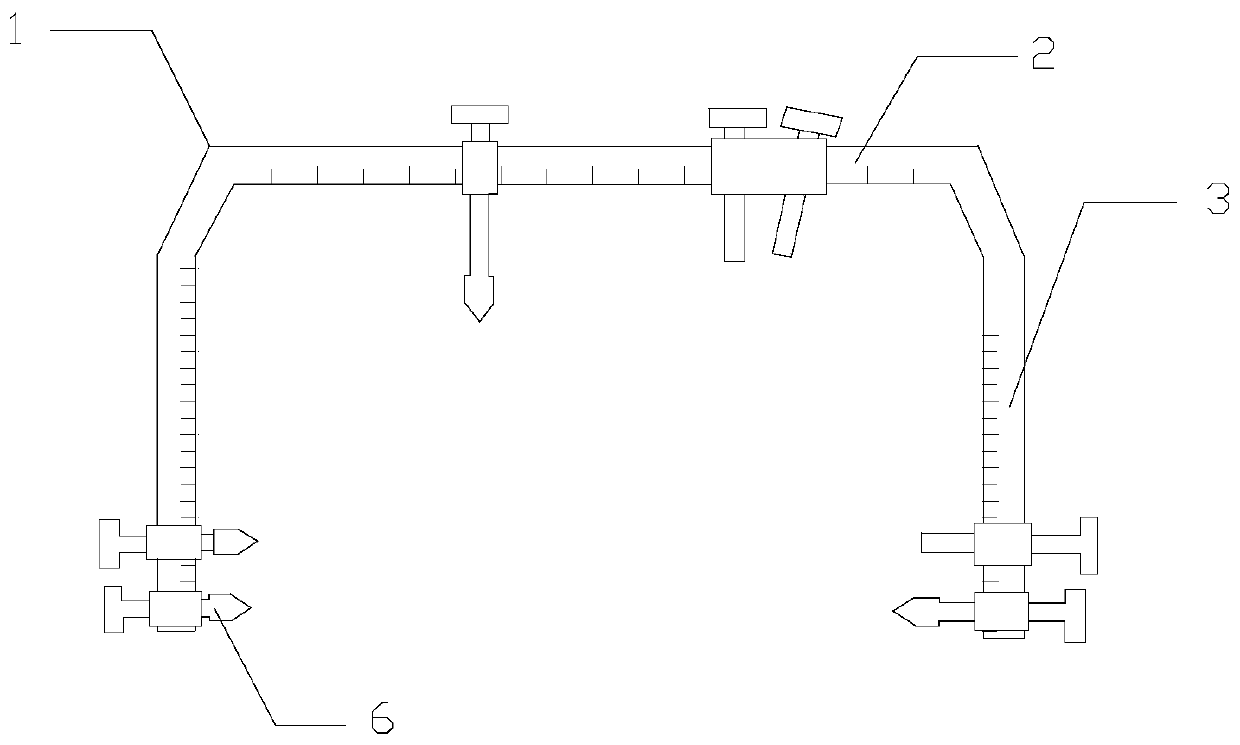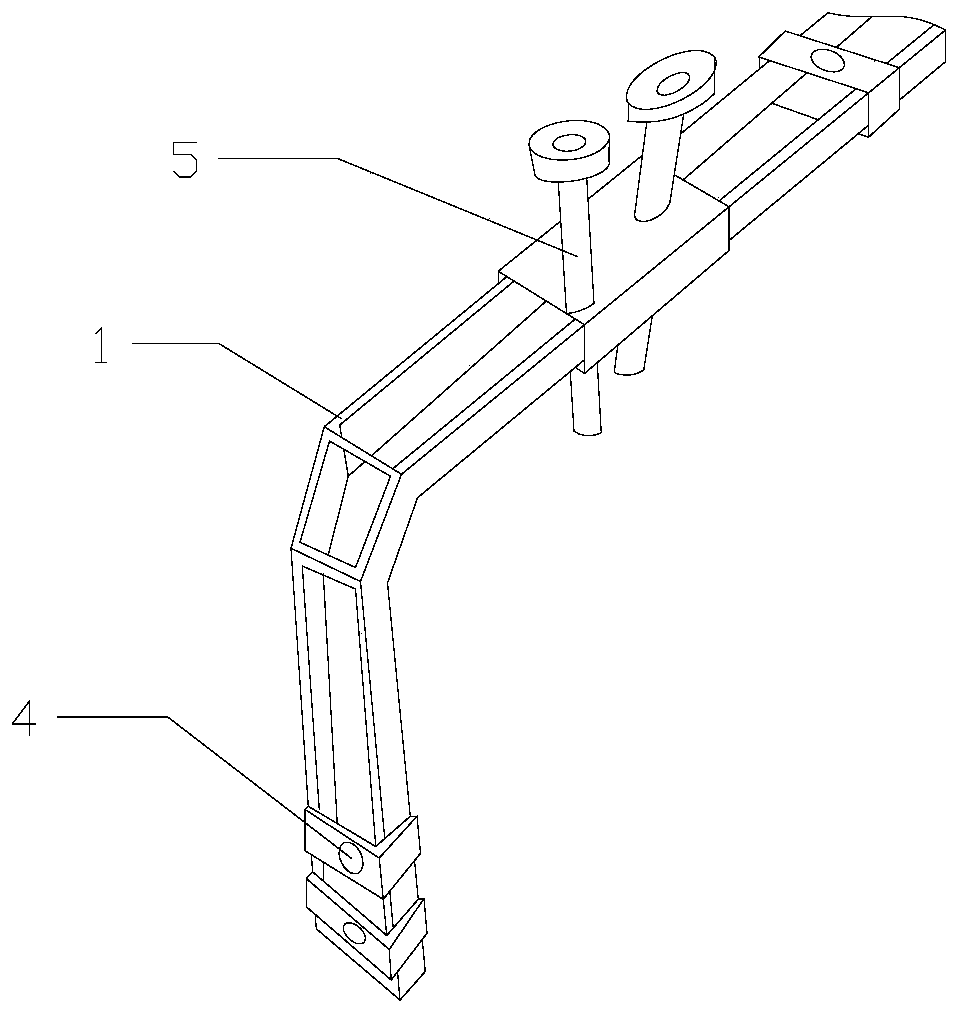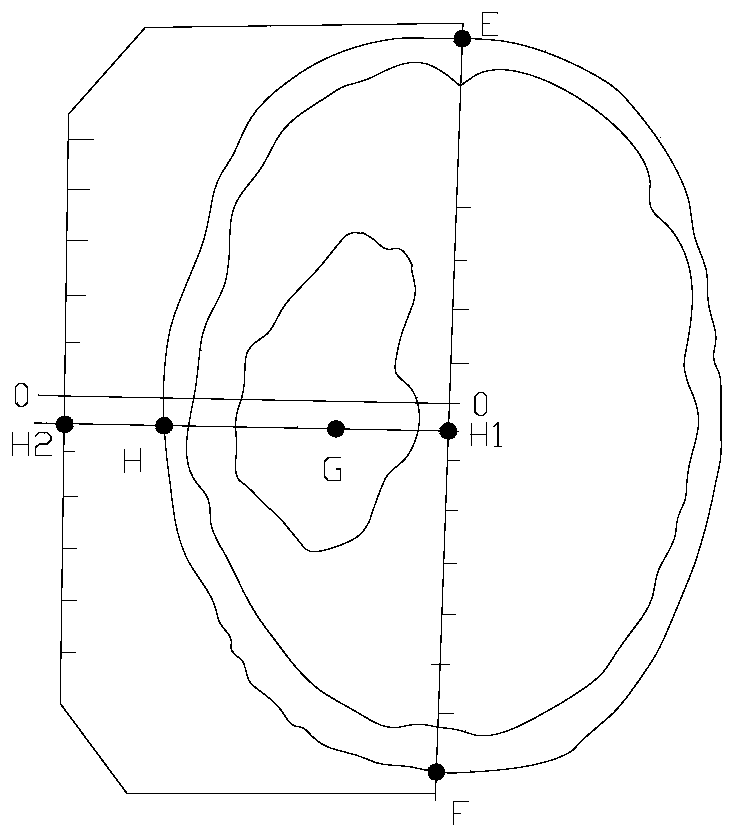TFCT-type craniocerebral positioning puncture auxiliary device and use method thereof
An auxiliary device and brain technology, applied in the field of medical devices, can solve the problems of unsuitable application in grassroots hospitals, difficult to popularize, and high error rate, and achieve the effects of facilitating rehabilitation, reducing surgical complications, and reducing operating errors.
- Summary
- Abstract
- Description
- Claims
- Application Information
AI Technical Summary
Problems solved by technology
Method used
Image
Examples
Embodiment 1
[0034] Embodiment 1 of the present invention provides a temporal puncture using TFCT cranial positioning puncture auxiliary device, such as Figure 4 shown, including the following steps:
[0035] Step 1: According to the preliminary positioning of the CT film, determine the hematoma target point G to be punctured, connect the midline EF, draw a vertical line to EF through point G, intersect at point O on the midline EF, intersect at point H on the scalp, and mark E, H two points and paste markers.
[0036] Step 2: Scan and verify the positions of E and H in the CT room, and adjust them to a satisfactory position.
[0037] Step 3: Install the device of the present invention after disinfection and local anesthesia, align the vertical hole of the crossbeam puncture unit with point H, and then install fixing pins 6 at points D, E, and F to fix the device of the present invention on the skull. Insert the guide tube 5 into the puncture channel 4 corresponding to point H, and inse...
Embodiment 2
[0039] Embodiment 2 of the present invention provides a method for using the forehead puncture of a TFCT type brain positioning puncture auxiliary device, such as Figure 5 shown, including:
[0040]Step 1: According to the preliminary positioning of the CT film, determine the hematoma target point G to be punctured, connect the midline EF, draw a vertical line to EF through point G, intersect at point O on the midline EF, intersect at point H on the scalp, and mark Q, H two points and paste markers.
[0041] Step 2: Scan and verify the positions of Q and H points in the CT room, and adjust them to a satisfactory position.
[0042] After disinfection and local anesthesia, the device of the present invention is installed so that the vertical hole of the vertical foot puncture unit is aligned with point Q, and the vertical hole of the crossbeam puncture unit is aligned with point H (this fixed point is not fixed, and it can be in multiple positions before and after H point), an...
PUM
 Login to View More
Login to View More Abstract
Description
Claims
Application Information
 Login to View More
Login to View More - R&D
- Intellectual Property
- Life Sciences
- Materials
- Tech Scout
- Unparalleled Data Quality
- Higher Quality Content
- 60% Fewer Hallucinations
Browse by: Latest US Patents, China's latest patents, Technical Efficacy Thesaurus, Application Domain, Technology Topic, Popular Technical Reports.
© 2025 PatSnap. All rights reserved.Legal|Privacy policy|Modern Slavery Act Transparency Statement|Sitemap|About US| Contact US: help@patsnap.com



